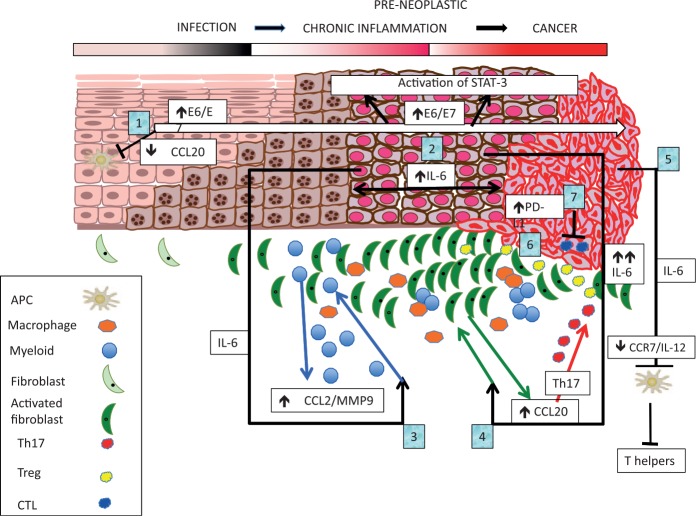Figure 1.
The early events which lead to initial immune deviation and further cascades of self-reinforcing events promoting immune escape and lesion progression to cancer: (1) E6/E7 driven loss of CCL20, loss of Langerhans cells; (2) STAT3 activation in human papillomavirus-transformed cells; (3) IL-6 driven CCL2/CCR2 feedback loop promoting myelo-monocytic infiltration; (4) IL-6-driven fibroblast production of CCL20 attracting Th17, sustaining chronic inflammation; (5) IL-6-driven downregulation of antigen-presenting cell migration and IL-12 production blocking; (6) sustained levels of immune-suppressive and tumour-promoting local factors (macrophages and dendritic cells: local MMP-9 production, Tregs and myeloid-derived suppressor cells (MDSCs); (7) immune-factor-driven up-regulation of PD-L1 by tumour or associated immune cells can block antitumour-specific T-cell effectors. The benefits of HPV oncogene vaccination may only be realized if used in combination with standard of care with or without treatments to overcome the local inflammation. These could include toll-like receptor stimulation (dsRNA), STAT3 and possibly IL6 inhibition, immune-checkpoint (PD-1/PD-L1) inhibition, as well as other strategies to directly modulate local tumour MDSCs, Tregs and macrophages.

